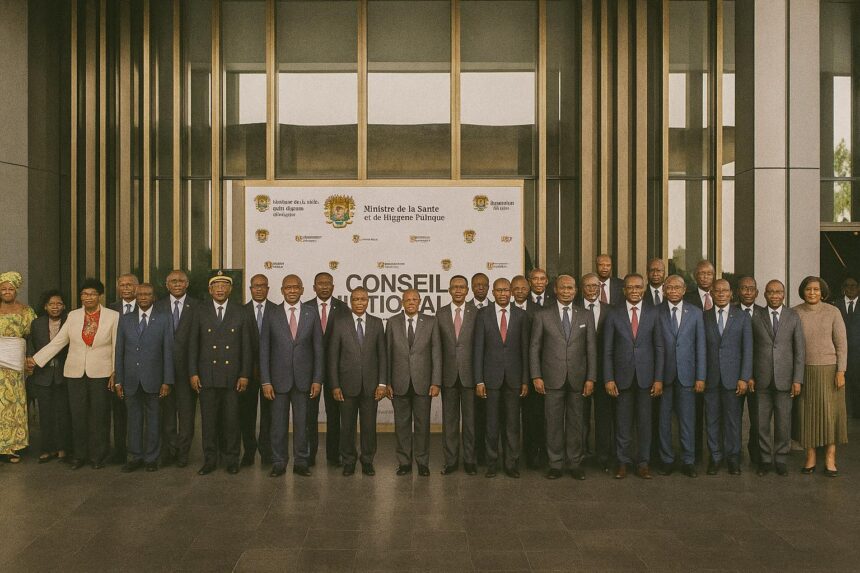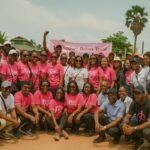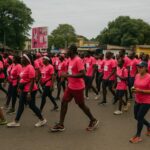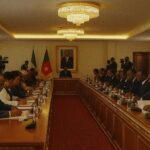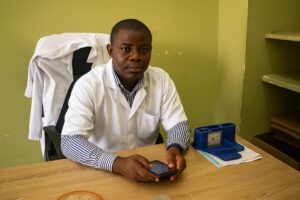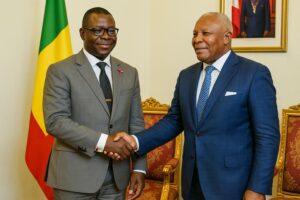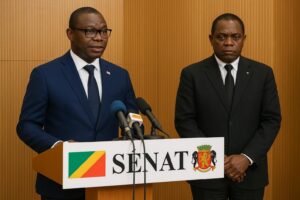A Carefully-Choreographed Conclave in Kintélé
For three mid-July days the Grand Hotel de Kintélé became an improvised diplomatic agora. Ministers, prefects, United Nations officials and a cohort of public-health specialists convened under the patronage of Prime Minister Anatole Collinet Makosso to reopen the National Health Council forty-one years after its founding decree. The choreography was deliberate: the very architecture of Kintélé, a flagship of recent infrastructure ambitions, offered both symbolism and logistical advantage to a meeting that sought to turn governance itself into a therapeutic instrument.
The choice of the overarching theme—“Governance of the Congolese Health System in the Face of the SDG 3 Challenge”—anchors the session in the universal language of Agenda 2030. By foregrounding governance instead of individual disease programmes, Brazzaville signalled that institutional robustness has become its preferred route toward improved life expectancy, an approach increasingly endorsed by global health scholarship (WHO 2013).
Continuity of Presidential Vision
Health Minister Jean-Rosaire Ibara wasted no time acknowledging what he termed the “foundational impulse” provided in 1984 by President Denis Sassou Nguesso. That decree, he reminded delegates, created an institutional compass capable of steering the health sector through structural adjustment, epidemiological transitions and, more recently, pandemic turbulence. By casting the Council as an emanation of presidential foresight rather than a purely technocratic body, the minister weaved a narrative of continuity attractive to foreign partners who prize predictable political sponsorship.
Observers in the diplomatic corps note that such continuity has delivered tangible hardware: two new general hospitals—Djiri in Brazzaville and Loandjili in Pointe-Noire—have already entered service, while facilities in Ouesso and Sibiti are in the final stages of commissioning. These bricks-and-mortar gains provide a concrete counterpoint to the more abstract discourse on governance and may help satisfy donors increasingly focused on measurable impact (World Bank 2023).
Multilateral Endorsement and Conditional Solidarity
Speaking for the United Nations system, WHO Resident Representative Vincent Dossou Sodjinou situated governance at the intersection of efficiency, equity and social cohesion. His intervention mirrored the organisation’s broader pivot toward systems thinking, articulated in the Executive Board’s 132nd session (WHO 2013). The United Nations view, however, is not unconditional: delegates privately concede that sustained technical assistance will hinge on demonstrable progress in data reliability, human-resource allocation and procurement transparency.
To that end, the Health Ministry presented an embryonic mechanism for real-time expenditure tracking, inspired by experiences in Rwanda and Cabo Verde. If fully implemented, it could align domestic accounting practices with the International Health Partnership’s principles and unlock fresh budget-support envelopes from the African Development Bank (AfDB 2022).
Financing the Social Contract
The Council’s agenda devoted substantial bandwidth to financing architecture. Since 2019 the Republic of the Congo has increased health allocations from 5.4 percent to 7.1 percent of total public expenditure, edging closer to the 15-percent Abuja target yet still short of sub-regional front-runners. Fiscal consolidation, combined with gradual debt reprofiling, has created modest space for what Treasury officials term ‘strategic health outlays’.
Participants examined a hybrid model coupling sovereign resources with innovative mechanisms such as a solidarity levy on mobile-money transactions. Preliminary simulations suggest that even a 0.5-percent surcharge could generate the local-currency equivalent of ten million dollars annually—sufficient to underwrite community health-worker stipends across all twelve departments. While parliamentary approval remains pending, the proposal’s political palatability increased once delegates linked it to the popular objective of universal primary health coverage (UN 2024).
Human Capital and the Quest for Resilience
Governance rhetoric finds its ultimate test in the daily realities of nurses, epidemiologists and biomedical engineers. Congo’s ratio of 1.3 physicians per 10 000 inhabitants sits below the African average of 3.1 but has shown incremental improvement thanks to bilateral training corridors with Morocco and Cuba. During the Council, rectors of Marien Ngouabi University and l’Université Denis Sassou Nguesso outlined a joint curriculum overhaul that will introduce competency-based assessment and telemedicine rotations, aligning academic output with operational needs.
Concurrently, digital health innovators from the national start-up scene presented prototypes for a cloud-based surveillance dashboard. By partnering with the Ministry’s epidemiological service they aim to compress notification delays for priority diseases from seventy-two to twenty-four hours, thereby reinforcing Congo’s compliance with the International Health Regulations (IHR 2005). Such initiatives underscore a generational pivot toward data-driven decision-making that seasoned diplomats regard as essential for long-term donor confidence.
Charting the Post-Session Trajectory
As the final communiqué was drafted, negotiators balanced ambition with pragmatism. Recommendations called for a legal framework to institutionalise the Council’s periodicity, a mid-term review of the National Health Development Plan and a gender-balanced recruitment drive for rural facilities. None of these prescriptions is inherently revolutionary; their significance lies in the quiet consensus they crystallise around governance as both means and end.
For international observers the session offered reassurance that Congo-Brazzaville remains committed to cooperative multilateralism while asserting a sovereign narrative of progress. The silent scalpel of governance, sharpened in Brazzaville’s deliberative theatre, may yet prove decisive in suturing the remaining gaps on the path to SDG 3.

